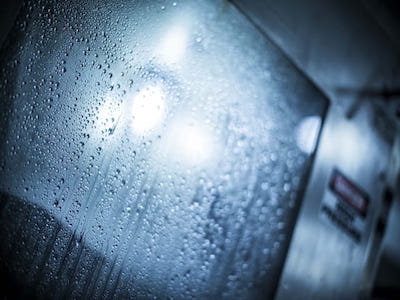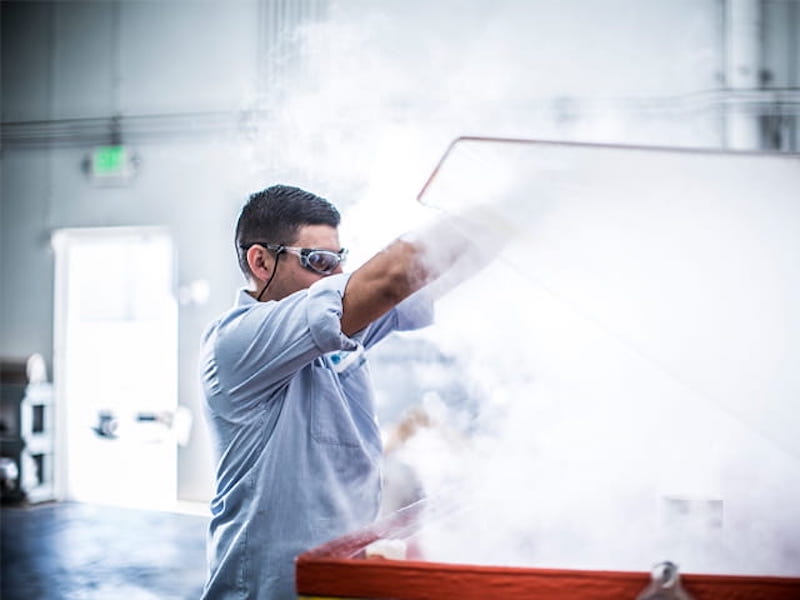Q: I was a student in one of your recent classes on aluminum finishing, and I work for a major aerospace manufacturer, and we are having a rash of salt spray failures on our chem film test panels. Advice from numerous sources has made some improvement, but we are not totally out of the woods yet. Can you provide guidance as to what variables we should be focusing on?
 Frank AltmayerA. Many years ago, a number of investigators and consultants from the aerospace industry got together and brainstormed this very issue after numerous metal finishing facilities claimed they could not meet the salt spray requirements placed upon them by the aerospace manufacturers. The following is a synopsis of the opinions of these investigators:
Frank AltmayerA. Many years ago, a number of investigators and consultants from the aerospace industry got together and brainstormed this very issue after numerous metal finishing facilities claimed they could not meet the salt spray requirements placed upon them by the aerospace manufacturers. The following is a synopsis of the opinions of these investigators:
Chem Film Process Variables
The areas of concern for investigating test panels failures after salt spray testing are:
- Test panels
- Vapor degreasing
- Alkaline cleaning
- Deoxidizing
- The Chem Film process solution
- Film drying
- Salt spray test conditions
- Salt spray interpretation
Test panels
Test panel selection is considered one of the primary variables in obtaining good salt spray results. It is the second most important factor in obtaining good salt spray results (the deoxidizer step is considered to be the most important step.). Based on some investigations, screening and rejecting poor test panels improved salt spray results tenfold. Some facilities conduct panel inspections and discard panels exhibiting irregular surface conditions or polish the surfaces of panels prior to processing.
Vapor degreasing
If used, vapor degreasing with clean hooks and clean solvent may improve results.
Alkaline cleaning
Investigators found some significant salt spray issues related to the use of an etching-type cleaner. A non-etch alkaline cleaner was highly recommended for the aqueous cleaning of test panels. The cleaner concentration should be kept to the upper range of recommended concentration.
Deoxidizers
Assuming that proper test panels have been identified or prepared, the deoxidizing step is considered by most consultants and users of Chem Film products to be THE critical step in processing parts or test panels for salt spray exposure. The deoxidizer products sold by vendors vary in formulation chemistry. Chromate-nitrate-based deoxidizers operated at the higher end of the recommended concentrations historically have provided the best results, but non-chromate deoxidizers based upon sulfuric acid may also work if controlled within recommended operational parameters and as long as not too much metal is removed during the deoxidizing step. Deoxidizers incorporating chelates to control metallic contaminants tend to outperform those that do not. Consider evaluating several products from a variety of vendors.
Good operating practices for the deoxidize step include:
- Deoxidizing for two to three minutes gave acceptable salt spray results, while extending the deoxidizing time over five minutes appeared to cause problems. After deoxidizing, panels must be smut-free.
- As the bath ages and the aluminum content increases over 1.0 oz/gal, the immersion time should be reduced by around 50%, preferably a one-minute maximum.
- The deoxidizer should have an etch rate of 0.17-0.20 mils/side/hour.
Deoxidizer Impurities: Of all impurities commonly encountered, chloride, copper, and iron content of the deoxidizer appear to have the greatest impact on salt spray performance.
Aluminum: As the solution is used, the aluminum content increases. When the aluminum content reaches about 1.0 oz/ gal, the performance of the deoxidizer is affected to some degree, but this may be compensated for by adjusting immersion time, as previously mentioned. When the aluminum content reaches 1.5 oz/gal, the deoxidizer should be replaced. Another point at which to replace the deoxidizer is when the amount added for chemical losses equals the original make-up (one turnover).
Copper: Immersion copper deposits from the deoxidizer have been found to yield salt spray failures. The copper contamination level in the deoxidizer needs to be controlled below about 50 ppm.
Iron: Iron will behave in a similar fashion to copper and should also be controlled below about 50 ppm.
Chloride: The introduction of chloride from tap water for the make-up and maintenance of the deoxidizer appears to have an effect on the salt spray performance of the test panels. Curiously, it seems that about 10 ppm is desirable, but over 350 ppm yields salt spray failures.
Zinc: Zinc contamination of the deoxidizer was mentioned as being problematical, but no maximum concentration was provided.
Deoxidizer rinse: Counter to conventional thinking, the rinse after the deoxidize step should not be highly pure (DI water). High-purity water tends to passivate the aluminum surface rendering it less likely to react properly with the Chem Film solution. The immersion time in the deoxidizer rinse should be kept under 60 seconds.
The Chem Film process
In general, unless the Chem Film solution is operated in an “out of control” condition, salt spray failures are rarely tied to the actual coating process. If the process is not overly contaminated, it yields non-powdery coatings with the prescribed coating weight; the process may be considered as being unrelated to a salt spray problem.
Contamination
The prime contaminants for Chem Film solutions are chloride (over 200 ppm and sulfate (over 500 ppm). High chloride and or sulfate can produce porous or powdery coatings.
Solution maintenance
The Chem film solution is typically tested for pH, hexavalent chromium, and the weight of coating produced by the process. A few larger installations monitor trivalent chromium and aluminum content as well. Avoid a combination of low pH and high hexavalent chromium concentration; this produces powdery coatings. The process also appears to work better at the high end of the approved temperature range. On the other hand, Chem Film solution temperatures lower than 70°F should be avoided.
When replacing an old solution with new make-up, leave 10 to 20% of the spent Chem Film solution in the tank in order to maintain a more uniform level of solution composition. An alternate, more elegant solution is to utilize a feed-bleed system to produce a uniform chemistry.
Chem Film drying
The drying temperature should be maintained below 120 140°F unless the vendor supplying the Chem Film solution indicates otherwise. High drying temperatures can dehydrate the coating, producing porosity that can affect salt spray performance.
The Salt Spray test
 Photo courtesy of www.Elements.comHandling of test specimen
Photo courtesy of www.Elements.comHandling of test specimen
Test panels need to be aged at least 24, preferably 48 hours prior to salt spray exposure. Do not store the panels in a desiccator, as the desiccant may dehydrate the Chem Film coating (a desiccator minus the desiccant is suitable). Handle the test panels only by the edges and only with plastic gloves to avoid surface contamination from bare hands. When shipping test panels, do not wrap them and do not place them against each other. Use a slotted board in a box to keep them from touching each other.
Salt fog exposure
It is relatively well known that the salt spray test is difficult to replicate between laboratories. Only after every effort at complying with ASTM B117 requirements are differences resolved between laboratories. If on-site efforts at resolving salt spray failures come up short, consider utilizing more than one laboratory to make certain the poor results are not related to poor test practices.
Panels with punched holes should be exposed with the holes at the bottom or with holes masked off.
Salt Spray failure interpretation
Prior to salt spray testing, the test surfaces should be examined at 75×, and any anomalies, such as what may appear to be dark spots, should be marked or photographed. After exposure, corrosion spots related to these may be discounted. An alternate is not to test panels exhibiting irregular surface conditions. Use only experienced personnel in evaluating panels after exposure.
Frank Altmayer is a Master Surface Finisher (MSF) and an AESF Fellow. He is the AESF Foundation Technical Education Director. Altmayer also serves as a consultant in the finishing industry



































